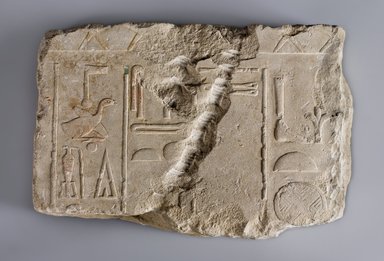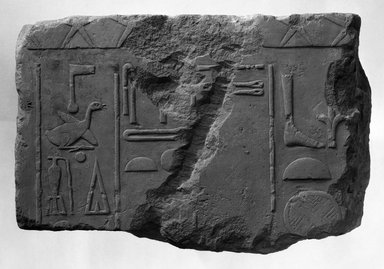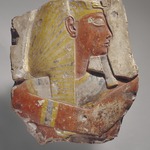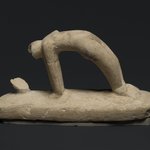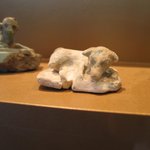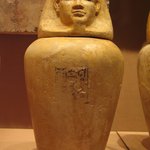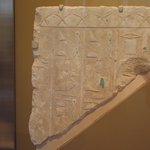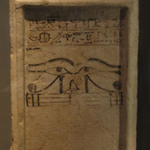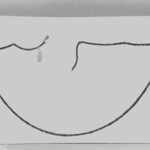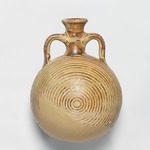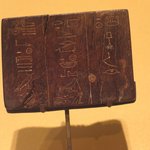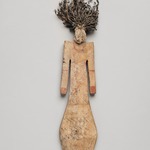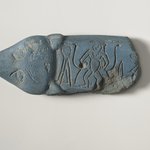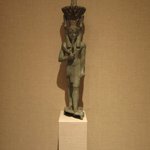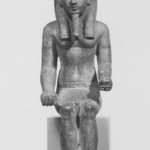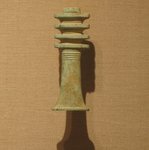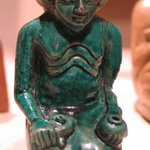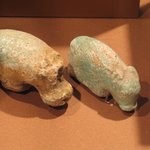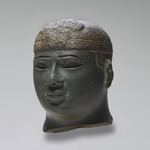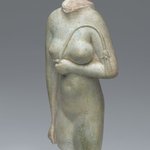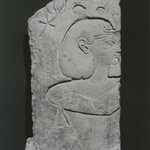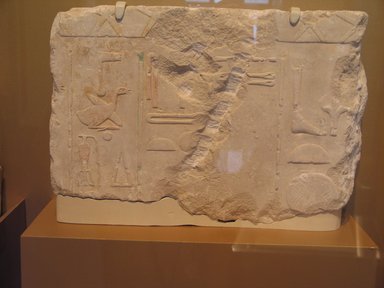

Fragment Mentioning Offerings, ca. 1844–1835 B.C.E. Limestone, pigment, 11 1/4 x 17 x 3 3/4 in., 42 lb. (28.6 x 43.2 x 9.5 cm, 19.05kg). Brooklyn Museum, Museum Collection Fund, 14.667. Creative Commons-BY (Photo: Brooklyn Museum, CUR.14.667_erg2.jpg)
Fragment Mentioning Offerings
Egyptian, Classical, Ancient Near Eastern Art
On View: Old Kingdom to 18th Dynasty, Egyptian Galleries, 3rd Floor
More than one-fifth of the over seven hundred ancient Egyptian hieroglyphic signs represent animals or parts of animals.
Scribes used animal images in hieroglyphs to represent sounds as well as the animal itself. Here, the image of a duck fledgling in the upper left section of the relief represents the word for “pellet,” referring to a piece of incense. The sound tja was found in the two words for “duck fledgling” and “pellet” in the ancient Egyptian language, making this hieroglyph the convention for representing that sound.
Scribes used animal images in hieroglyphs to represent sounds as well as the animal itself. Here, the image of a duck fledgling in the upper left section of the relief represents the word for “pellet,” referring to a piece of incense. The sound tja was found in the two words for “duck fledgling” and “pellet” in the ancient Egyptian language, making this hieroglyph the convention for representing that sound.
MEDIUM
Limestone, pigment
DATES
ca. 1844–1835 B.C.E.
DYNASTY
Dynasty 12
PERIOD
Middle Kingdom
DIMENSIONS
11 1/4 x 17 x 3 3/4 in., 42 lb. (28.6 x 43.2 x 9.5 cm, 19.05kg) (show scale)



COLLECTIONS
Egyptian, Classical, Ancient Near Eastern Art
ACCESSION NUMBER
14.667
CREDIT LINE
Museum Collection Fund
PROVENANCE
Funerary Temple, Pyramid of Sesostris II, Lahun, Egypt; 1913-14, excavated by the British School of Archaeology; 1914, purchased from the British School of Archaeology by the Brooklyn Museum.
Provenance FAQ
CATALOGUE DESCRIPTION
Fragmentary limestone relief consisting of three columns of hieroglyphs above which is a register decorated with five-pointed stars.
Condition: Edges chipped; central portion badly damaged; apparently destroyed deliberately in antiquity, as a succession of chisel marks is clearly visible from top to bottom. Extreme hardness of the stone prevented the shattering of the entire surface. Extensive remains of color.
MUSEUM LOCATION
This item is on view in Old Kingdom to 18th Dynasty, Egyptian Galleries, 3rd Floor
CAPTION
Fragment Mentioning Offerings, ca. 1844–1835 B.C.E. Limestone, pigment, 11 1/4 x 17 x 3 3/4 in., 42 lb. (28.6 x 43.2 x 9.5 cm, 19.05kg). Brooklyn Museum, Museum Collection Fund, 14.667. Creative Commons-BY (Photo: Brooklyn Museum, CUR.14.667_erg2.jpg)
IMAGE
overall, CUR.14.667_erg2.jpg. Brooklyn Museum photograph, 11/26/2007
"CUR" at the beginning of an image file name means that the image was created by a curatorial staff member. These study images may be digital point-and-shoot photographs, when we don\'t yet have high-quality studio photography, or they may be scans of older negatives, slides, or photographic prints, providing historical documentation of the object.
RIGHTS STATEMENT
Creative Commons-BY
You may download and use Brooklyn Museum images of this three-dimensional work in accordance with a Creative Commons license. Fair use, as understood under the United States Copyright Act, may also apply.
Please include caption information from this page and credit the Brooklyn Museum. If you need a high resolution file, please fill out our online application form (charges apply).
For further information about copyright, we recommend resources at the United States Library of Congress, Cornell University, Copyright and Cultural Institutions: Guidelines for U.S. Libraries, Archives, and Museums, and Copyright Watch.
For more information about the Museum's rights project, including how rights types are assigned, please see our blog posts on copyright.
If you have any information regarding this work and rights to it, please contact copyright@brooklynmuseum.org.
RECORD COMPLETENESS
Not every record you will find here is complete. More information is available for some works than for others, and some entries have been updated more recently. Records are frequently reviewed and revised, and we welcome any additional information you might have.
